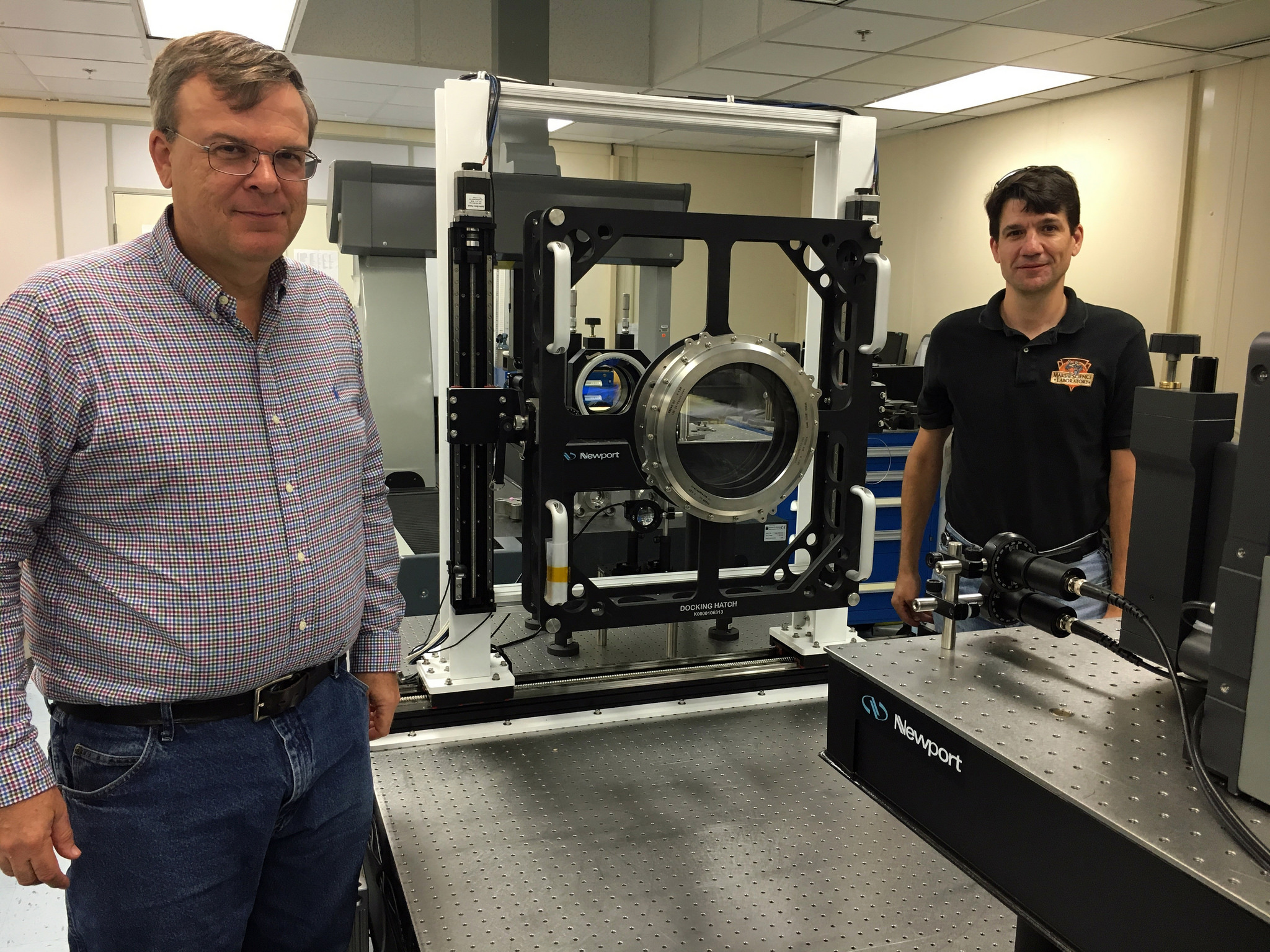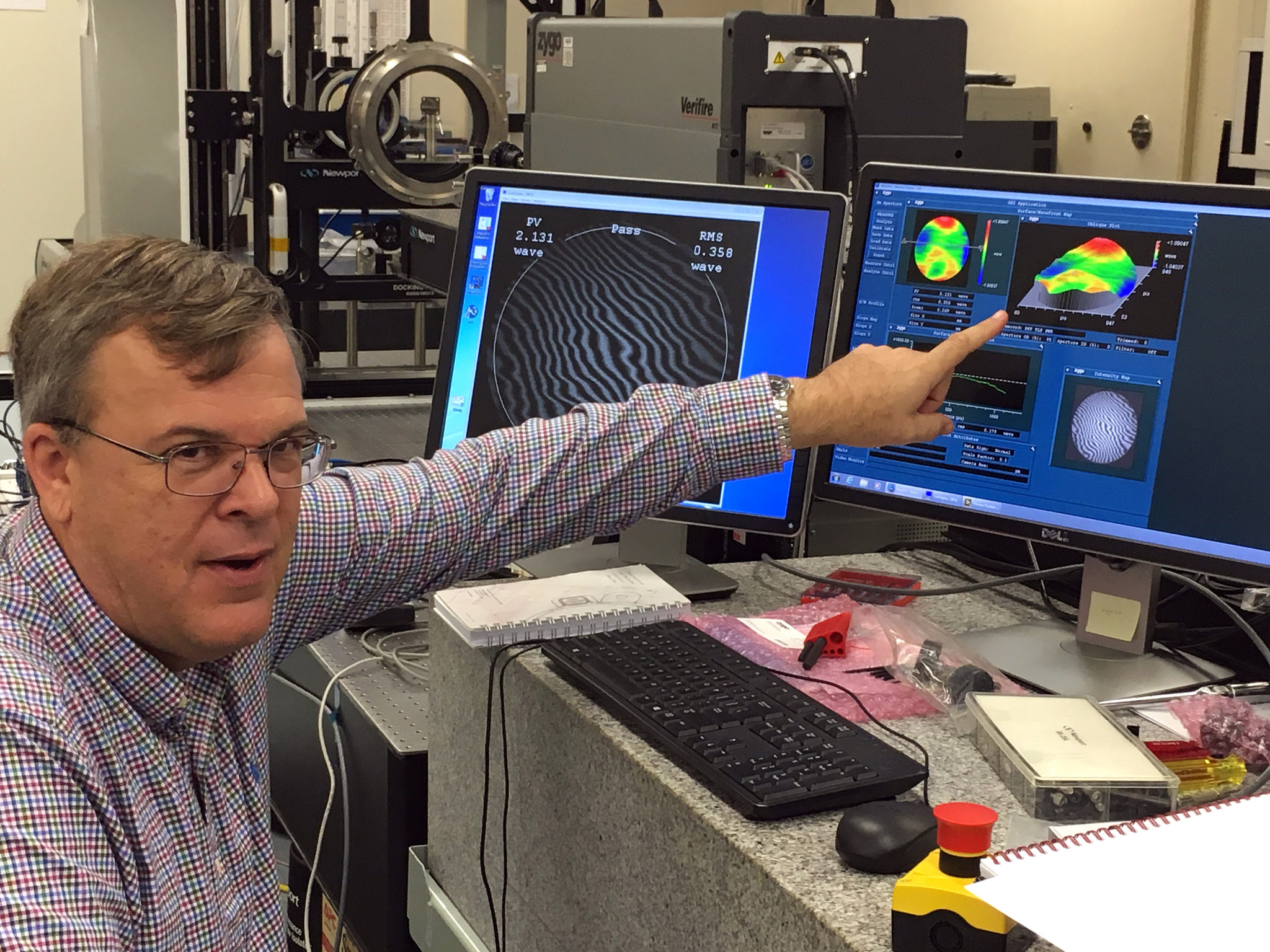
By Leejay Lockhart and Amanda Griffin
NASA’s John F. Kennedy Space Center
A few multi-layer windows on a spacecraft provide astronauts the view they may need for navigating space and carrying out their exploration mission with visual data. NASA is working to improve the durability of those windows, and reduce cost and weight, while maintaining the clarity astronauts need to carry out their tasks and view the Earth and other destinations as they travel farther into the solar system.
The space shuttle used only glass panes for its primary windows. While these provided good optical quality, they added costly mass to the spacecraft. Modern spacecraft windows incorporate acrylic and other plastics that are lighter, stronger and less brittle, but often provide lower quality optical properties.
A few years ago, NASA began an effort to ensure the optical quality of the panes used on agency or commercial spacecraft. Each window pane must ensure the view is clear for the astronauts and to help their cameras capture the best possible photographs.
Recently, a team from Kennedy Space Center’s Exploration Research and Technology Programs performed the first optical quality testing on a window that is ready for installation in the docking hatch of NASA’s Orion spacecraft. On Orion, three panes comprise the hatch window. This hybrid combination of glass and plastics is a first for NASA and will safeguard the spacecraft’s inhabitants as one glass pane shields them from the heat of re-entry, another acrylic pane provides protection from the vacuum that surrounds the craft when it is outside of Earth’s atmosphere, and the third pane serves as a redundancy for the glass pane.
When you use multiple panes of material for a window, the image you see out of it could be distorted. The tests performed determine the amount of image distortion – the variations in the image seen through an optical material. These are wavefront variations. Think of it as looking at something in water when the surface is moving.
However, according to Kennedy’s Mark Nurge, this Orion window shouldn’t be a problem. “The window assembly was approximately 10 times better than the stated wavefront requirements,” he said.
The data from the tests help improve the requirements for optical quality on Orion’s windows and verify how the window should perform in space. The Kennedy team is responsible for testing all the viewing and hatch windows for Orion, and also is working with Commercial Crew Program providers to test windows for their spacecraft headed to the International Space Station.
The primary test measures variations in window pane flatness with an accuracy down to the level of tens of nanometers. The device used in the test can show minute differences between new windows and ones that have been subjected to the simulated pressures of space. The ultimate goal is to determine if there are any distortions outside of the prescribed threshold, so the astronauts onboard the spacecraft can take the most precise images possible.
These window tests are another step towards completion of Orion as the spacecraft is prepared to take humans farther into space than ever before.



























